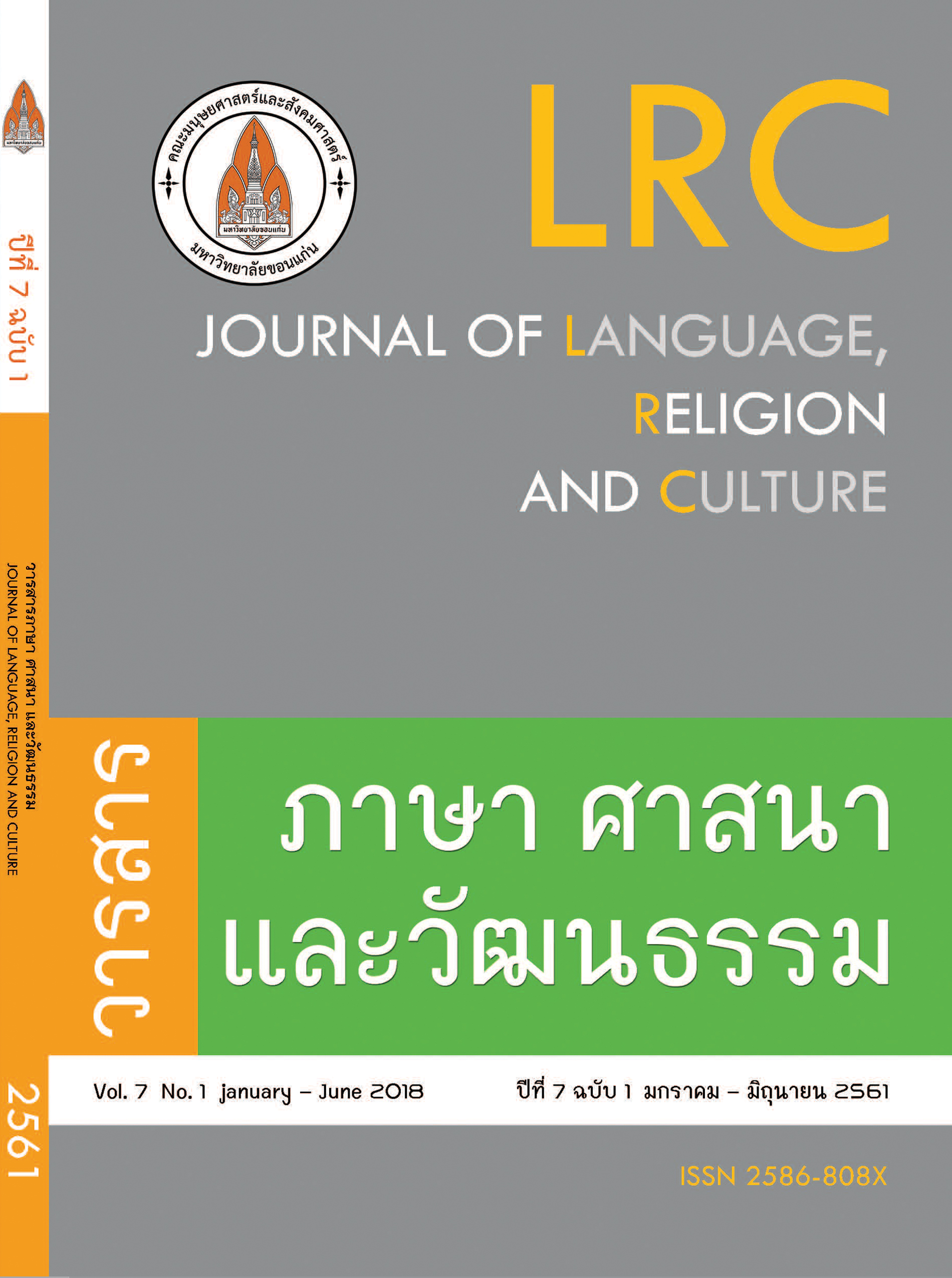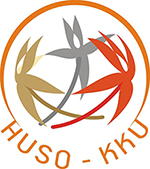อุปลักษณ์ผู้ชายและผู้หญิงในสุภาษิตบ่าวสาวลาว; Metaphors of Men and Women in Bao-Sao Lao Proverbs
คำสำคัญ:
อุปลักษณ์, อุปลักษณ์เชิงมโนทัศน์, สุภาษิต, ผญาภาษิต, ภาษาลาว, Metaphors, Concept metaphors, Proverbs, Pah-yah proverbs, Lao languageบทคัดย่อ
บทความวิจัยนี้มีจุดประสงค์เพื่อค้นหาอุปลักษณ์ผู้ชายและผู้หญิงในสุภาษิตบ่าวสาวลาว และความสัมพันธ์ระหว่างอุปลักษณ์กับมโนทัศน์ผู้ชายและผู้หญิงของสังคมลาว
ผ่านการใช้คำอุปลักษณ์ ข้อมูลการวิจัยคือสุภาษิตบ่าวสาวลาว จำนวน 244 บท รวบรวมจากหนังสือสุภาษิตลาว 4 เล่ม นำมาแปลความหมายและตรวจสอบความหมายโดยเจ้าของภาษาลาว วิเคราะห์อุปลักษณ์โดยปรับแนวคิดของ เลคอฟฟ์และจอห์นสัน (1980) เป็นกรอบการวิจัย ผลการวิจัย พบอุปลักษณ์ผู้ชาย จำนวน 121 คำ อุปลักษณ์ผู้หญิง จำนวน 84 คำ อุปลักษณ์ทั้งหมดเกิดจากการนำคำที่อยู่ในวงความหมายต้นทาง (source domain) แบ่งเป็น 1) อุปลักษณ์สิ่งมีชีวิต โดยพบอุปลักษณ์สัตว์ มากที่สุด อาทิ วัว ควาย ปลา นก ไก่ งู กบ เขียด รองลงมา คือ อุปลักษณ์พืช อาทิ ข้าว กล้วย หญ้า ดอกไม้ ผลไม้ ผักสวนครัว 2) อุปลักษณ์สิ่งไม่มีชีวิต อาทิ เครื่องแต่งกาย เครื่องประดับ อุปกรณ์เครื่องมือที่ทอผ้า ไถ มากที่สุด รองลงมา คือ สภาพธรรมชาติ สถานที่ เชื่อมโยงไปสู่วงความหมายปลายทาง (target domain) คือ ผู้ชายและผู้หญิงในสังคมลาว ผลการวิจัยนี้สอดคล้องกับสมมติฐาน กล่าวคือ อุปลักษณ์สัตว์และอุปลักษณ์พืชพบมากที่สุด โดยสัตว์และพืชเหล่านี้พบได้ทั่วไปในชนบทของลาว กอปรกับมีความเชื่อมโยงกับ อาชีพ การทำนา การปลูกพืช การเลี้ยงสัตว์ การบริโภค ตลอดจนวิถีวัฒนธรรมลาวด้าน การสร้างบ้านเรือน การแต่งกาย การทอผ้า เป็นหลัก อุปลักษณ์เหล่านี้มีการถ่ายโยงความหมาย (mapping) ไปสู่ผู้ชายและผู้หญิงในด้าน รูปลักษณ์ ลักษณะคุณสมบัติ คุณค่า บทบาท หน้าที่ พฤติกรรม
Abstract
This article aims to investigate the metaphors of men and women in Bao-Sao Lao proverbs and the relationship between the metaphors and the concept of men and women in Lao society through the use of metaphors. The research data were 244 Lao proverbs compiled from 4 Lao proverb books. The books were translated and interpreted the meaning by the native speakers of Lao. The metaphors were analyzed by adjusting the concept of Lakoff and Johnson (1980) as a framework for research. The results of the research showed that there were 121 male metaphor terms and 84 male metaphor terms. All metaphors were derived from the words in the source domain which can be classified into living metaphors and non-living metaphors. First, the living metaphors which can be found most were the animal metaphors such as cows, buffaloes, fish, birds, snakes, and frogs, and plant metaphors such as rice,
banana, grass, flowers, fruits, and vegetables respectively. Second, the non-living metaphors which can be found most were costume, accessories, tools for weaving, natural conditions, and places respectively. It was linked to the target domain which was men and women in Lao society. The results of this research were in line with the hypothesis that the animal and plant metaphors were found most. These animals and plants are common in the countryside of Laos. It was linked to rice farming, farming, animal husbandry, and consumption as well as Lao culture mainly in terms of house building, dressing, and weaving. These metaphors were mapped to men and women in terms of appearance, characteristics, values, roles, responsibilities, and behaviors.







